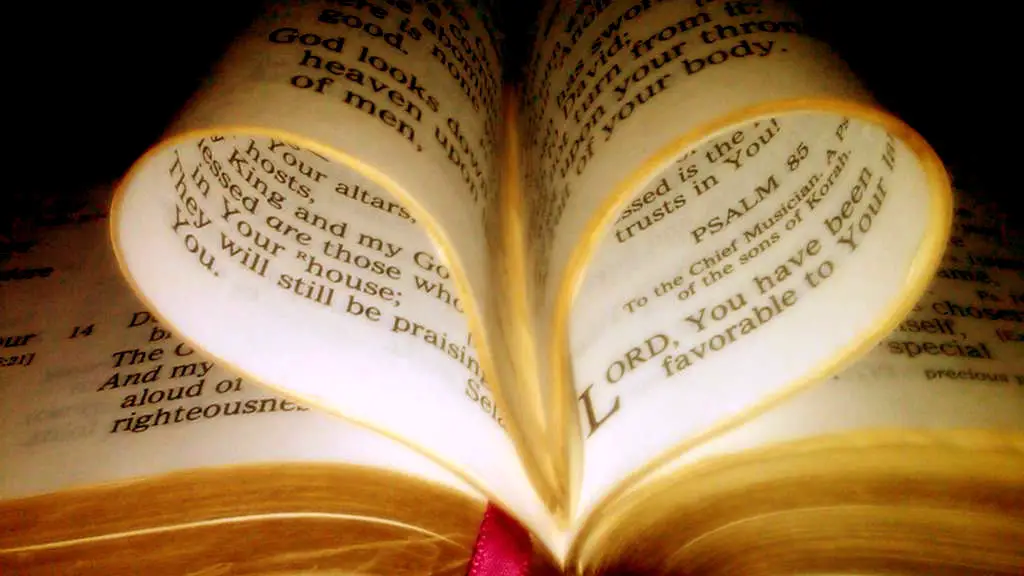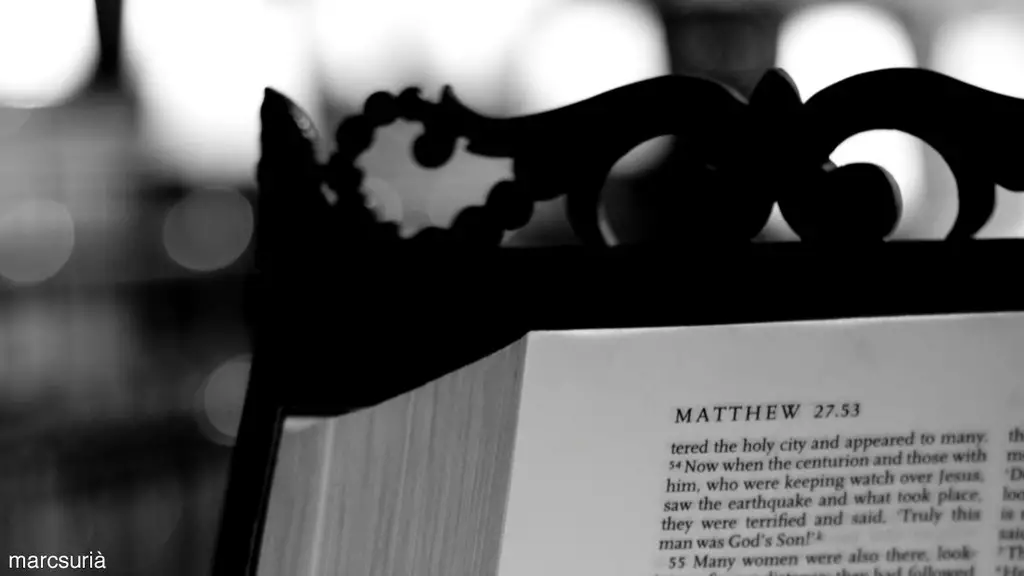Biblical Context
In the Bible, Madonna is not often referred to. In fact, her name does not appear. However, some scholars believe that she is alluded to in certain passages. First, in Matthew 1:18-25, there is the story of Mary and Joseph. Mary is identified as a young woman who learns that she is soon to be the mother of a child who would be the savior of Israel, the Messiah.
Another possible reference to the Madonna is the woman with the alabaster jar filled with ointment who anoints Jesus in Mark 14. The woman is typically identified as Mary Magdalene and is thought to be one of the most devoted followers of Jesus. She is also one of the few to remain with him during his suffering on the cross and is present at the empty tomb, where she is the first witness to Jesus’ resurrection.
The Catholic Perspective
The Catholic Church venerates Mary as the mother of Jesus and views her as a figure of compassion and humility. Consequently, the reverence of Mary is deeply embedded in Roman Catholic theology and practice. The Catholic Church teaches that as the mother of Jesus, Mary is a role model for believers who are called to imitate her example of faithfulness, obedience, and devotion to God.
The Catholic Tradition assigns specific titles to Mary including the Blessed Virgin Mary and the Queen of Heaven, among others. One of the most recognizable titles given to Mary is Madonna, which translates from Italian to mean “my lady.” Virgin Mary is referred to by this term by many Catholic faithfuls and its English version, as a sign of deep respect for the mother of Jesus.
The Orthodox Perspective
The Orthodox Church has a different tradition and understanding of the reverence for the Virgin Mary. In the Orthodox faith, Mary is regarded as the Theotokos, or “God Bearer”. This expression of Mary’s role in salvation history emphasizes the full and perfect humanity of Jesus, who is born of a mother, but also the full and perfect divinity, since Jesus is also the Son of God.
In the Orthodox Church, images of the Virgin Mary are a powerful reminder of the Incarnation of Jesus, and Orthodox Christians do not hesitate to turn to her in prayer, asking the intersession of the blessed Theotokos. There is no single title that is used in the Orthodox Church to refer to Mary, although the term Madonna is occasionally used by some Orthodox faithfuls.
The Historical Perspective
The veneration of Mary has its roots in early Christian devotion, and has been adapted and changed over centuries of history. Through the Middle Ages, Mary was venerated, especially in the context of the Marian cult, with local and regional traditions, namely the cult of Black Madonna’s.
Within this concept of the veneration of Mary, the title Madonna was widely used and popularized. As the cult of the Virgin Mary spread throughout Europe, images of the Virgin were painted and reproduced, leading to popular rituals such as Lighting of Candles, Processions, and Marian Feasts, which are still practiced to this day.
The title Madonna also found its way into literature and art, as a symbol of devotion and love towards the holy mother. These days, the stereotype of the Virgin being a maternal figure of modest beauty has been replaced by a more complex one, as both an emotional and cultural figure.
The Reformation Perspective
In the period of the Protestant Reformation, the veneration of Mary and its associated cults were seen as a challenge to the more austere beliefs of the new reformed churches. Protestantism rejected the idea of Mary being venerated as anything other than Joseph’s wife and Jesus’ mother, and as such removed almost all references to Mary from the Christian tradition, including the concept of Madonna.
Protestants took a significantly further step and rejected the veneration of Mary altogether. This was a significant turning point in the history of the Christianity, and the role of Mary changed dramatically. In the reformed churches, Mary is still an essential part of the Christian story, however the honor and the devotion that was shown to her in the Catholic and Orthodox churches gave way to a less structured and more informal understanding.
Contemporary Perspectives
In the modern era, Madonna is often used as a title of veneration, despite the lack of formal recognition in both the Protestant and Orthodox Churches. The term is often used as a sign of respect, serving as a reminder of the example of faithful service and devotion to God that Mary demonstrated.
Today, the title Madonna is often seen as a celebration of womanhood, particularly motherhood, and the fact that the term was used to refer to the mother of Jesus has allowed it to be adopted into popular culture, with references to the Madonna appearing in music, art, and film.
Cultural Relevance
The cultural relevance of the title Madonna is best seen in how it is used as a sign of respect towards women. It is not only used as a sign of reverence towards the Virgin Mary, but is also used as a general term of endearment, regardless of religious background. A woman addressed as Madonna is seen as a woman of wisdom, humility, and beauty.
The title also serves to frame a woman as a kind of saint, or spiritual guide, and has been used to refer to powerful female figures in history such as Joan of Arc, Isabella of Aragon and Catherine of Siena. Cultural representations of the Madonna are used to suggest a sense of calm and serene composure, even in the face of adversity.
Postmodern Understanding
In recent times, the title Madonna has become increasingly loaded with complex connotations, as well as postmodern interpretations. Popular culture often uses the term ironically or in a mocking fashion, reflecting a deconstruction of the biblical narrative and a rejection of organized religion. Through this lens, the term is often seen as a symbol of patriarchy and oppression rather than the loving reverence of a mother figure.
The term has come to have a variety of different meanings, ranging from a sign of respect to a sign of criticism. The popularity of the title madonna is linked to its ambiguity, as it carries with it a wide range of possible interpretations.
Final Thoughts
The title Madonna has been used for centuries to refer to the Virgin Mary, but its meaning has changed over time. In addition to its religious connotations, the term has come to suggest a variety of different meanings, from a symbol of reverence to a sign of postmodern irony. Through its various interpretations, the title Madonna has been able to maintain a lasting relevance and significance in culture and religion.




